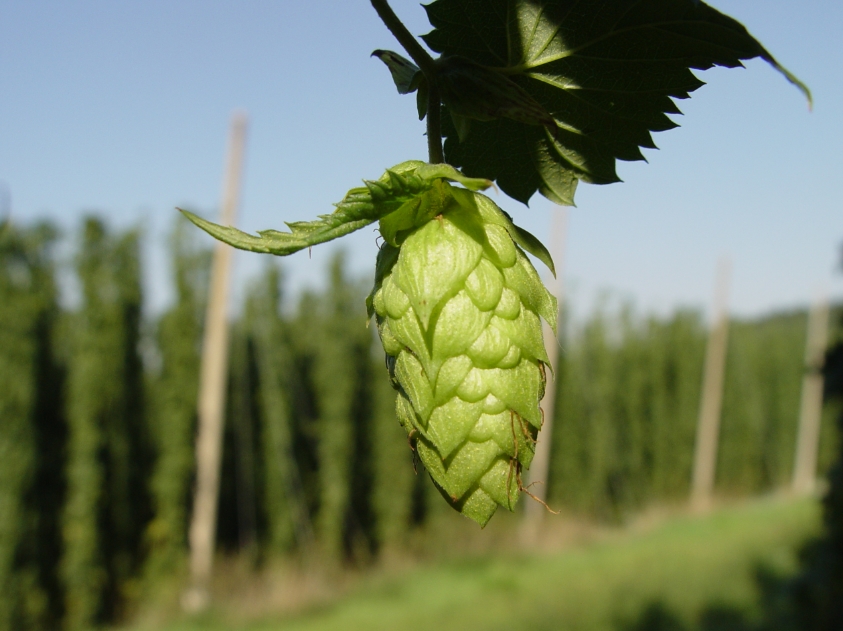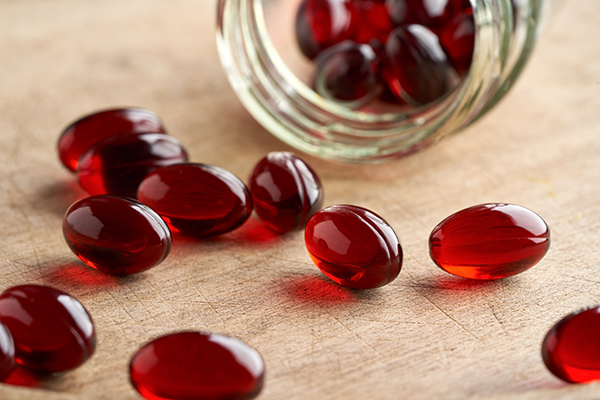Hops: The herbal marvel behind beer
By avagrace // 2025-04-02
Tweet
Share
Copy

- Hops (Humulus lupulus) has a long history of use dating back to the Neolithic period, but its cultivation for brewing purposes began in the 8th century CE in a Bavarian monastery. By the Middle Ages, hops had spread throughout Europe, and by the 17th century, it was introduced to the New World by European settlers.
- Today, significant hops production centers are found in Germany, the United States, the Czech Republic and China, with regions like the Yakima Valley, Hallertau and Saaz being particularly renowned for their high-quality hops. The plant thrives in temperate climates with moderate temperatures, ample sunlight and well-drained soils.
- Hops is rich in phytonutrients including alpha acids, beta acids, xanthohumol, myrcene and linalool/geraniol, each contributing to the plant's bitter flavor, antimicrobial, antioxidant, anti-inflammatory and sedative properties.
- Traditionally used for their calming and sleep-inducing properties, hops has also been studied for its potential to help manage menopause symptoms, improve digestive health and reduce inflammation.
- Beyond brewing, hops can be used in hop tea, salads, herbal infusions and as a flavoring agent in culinary dishes. Recipes such as hops-infused olive oil, hops tea with honey and lemon, hops and goat cheese salad, hops-flavored meats, and hops bitters showcase the plant’s diverse culinary applications.
Historical overview
The origins of hops can be traced back to ancient times, with archaeological evidence suggesting that wild hops were present in Europe and Asia as early as the Neolithic period. However, it wasn't until the 8th century CE that hops began to be cultivated for use in brewing. The first documented use of hops in beer-making dates back to 822 CE in a Bavarian monastery, where monks noted the plant's ability to preserve and enhance the flavor of their brews. (Related: Hops, a plant used in making beer, can protect your liver … but it doesn’t mean your beer can.) By the Middle Ages, cultivation of hops had spread throughout Europe, and by the 16th century, its use in making beer had become widespread, replacing traditional flavoring agents like gruit. The introduction of hops to the New World occurred in the 17th century, primarily by European settlers, who recognized the plant's value in both brewing and herbal remedies. Today, hops is cultivated in a variety of temperate regions, with significant production centers in Germany, the United States, the Czech Republic and China. The Yakima Valley in Washington State, the Hallertau region in Germany and the Saaz region in the Czech Republic are particularly renowned for their high-quality hops. These areas provide the ideal conditions -- moderate temperatures, ample sunlight and well-drained soils -- that hops require to thrive.Phytonutrients and medicinal applications
Hops is not just a flavorful addition to beverages -- it is also rich in phytonutrients that contribute to its medicinal properties. The primary active compounds in hops include:- Alpha acids (humulones) - Responsible for the bitter flavor in beer, these compounds have been shown to have anti-inflammatory and antimicrobial properties.
- Beta acids (lupulones) - While less bitter than alpha acids, beta acids also exhibit antimicrobial activity.
- Xanthohumol - This flavonoid has been studied for its antioxidant, anti-inflammatory and anticancer properties.
- Myrcene - A terpene that contributes to the floral and spicy aroma of hops and has sedative effects.
- Linalool and geraniol - Terpenoids that contribute to the plant's calming and anxiolytic properties.
- Menopause - The flavonoids in hops, particularly 8-prenylnaringenin, are potent phytoestrogens that can help alleviate menopausal symptoms such as hot flashes and mood swings.
- Digestive issues - Hops has been shown to stimulate the production of digestive enzymes, potentially aiding in the relief of digestive issues like bloating and indigestion.
- Inflammation - The anti-inflammatory properties of hops may help in the management of conditions like arthritis and other inflammatory disorders.
Culinary uses and recipes
While hops is most famous as a key ingredient in beer, it also has a place in culinary and herbal traditions. Hops can be used in a variety of ways beyond brewing, including:- Hops tea - Brewed from the dried strobiles, hops tea can be a soothing beverage, particularly before bedtime.
- Hop salads - Young hops shoots can be blanched and used in salads to add a slightly bitter, herbal flavor.
- Herbal infusions - Hops can be infused into oils and vinegars, which can then be used to make dressings and marinades.
- Hops-infused olive oil - Infuse olive oil with dried hops for a unique flavor that pairs well with salads, marinades and roasted vegetables.
- Hops tea with honey and lemon - A soothing bedtime beverage made by steeping dried hops cones in hot water sweetened with honey and a squeeze of lemon.
- Hops and goat cheese salad - Combine blanched hops shoots with fresh goat cheese, arugula and a lemon vinaigrette for a refreshing and slightly bitter salad.
- Hops-flavored meats - Marinate meats in hops-infused oil or beer for a depth of flavor that complements grilled or roasted dishes.
- Hops bitters - Create homemade bitters using dried hops, spices and alcohol, perfect for adding a unique touch to cocktails.
More related stories:
Hops compounds have potential to treat diabetes, cancer: research. A seemingly minor breakthrough of major importance. Beer: New treatment for metabolic syndrome? Compounds from hops found to mitigate symptoms. Beer has a surprisingly positive effect on reducing bone damage and women's chances for getting osteoporosis. Sources include: Brighteon.ai NaturalNews.com Brighteon.comTweet
Share
Copy
Tagged Under:
natural medicine herbal medicine functional food alternative medicine natural health herbs natural cures beer ingredients food science plant medicine naturopathy hops remedies food cures food is medicine goodhealth goodmedicine goodfood health science
You Might Also Like
Turkey: A protein-packed superfood with centuries of tradition behind it
By Laura Harris // Share
Walnuts can help you beat stress
By News Editors // Share
Astaxanthin: Nature’s ultimate antioxidant powerhouse
By HRS Editors // Share
Budesonide emerges as lifeline for measles patients amidst hospital system turmoil
By Lance D Johnson // Share
Secretary Kennedy is on the move
By News Editors // Share
Recent News
"Evil people": Organized 'bankrupt Tesla' group tied to formerly USAID-funded disinfo queen
By newseditors // Share
Trump’s tough trade move: Short-term pain for consumers, long-term victory for U.S. workers!
By finnheartley // Share










